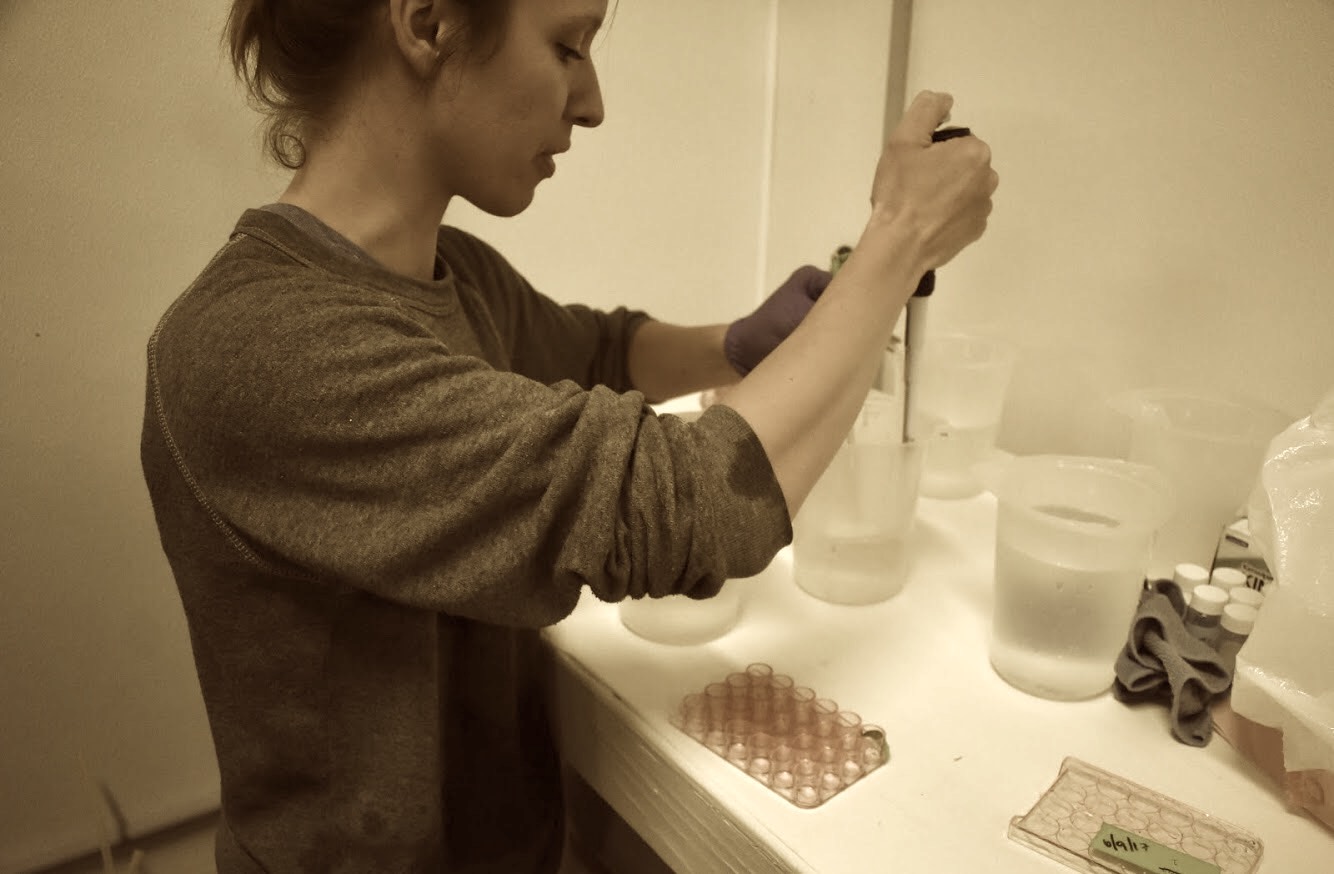Final sampling pre-larvae
After a long week at the NSA conference I spent the day at Manchester cleaning, sampling one last time, and getting the larval catchment buckets installed.
Cleaning
Unfortunately I found abnormally high mortality rates in my bags today, many that were freshly dead. There are two likely causes: temperature exceeded 18C in the past couple days (~19C), and the animals hadn’t been screened for mortality for possibly 2 weeks (since I had last been there). PSRF had cleaned them on their regular schedule, but didn’t have time (due to NSA) to remove the dead. Not all bags/buckets had high mortality, however. The C group, high food / low temp, had higher mortality than the others. I’m curious if it has anything to do with the manifold or header/pump system that they were on (they were at position B). I’m going to check back over my records to see if there was abnormally high mortality at position B during the pre-conditioning treatments. Temperature wasn’t higher in those tanks over the past two weeks, it was in fact a smidge lower than the others. I’m also going to check flow rates next visit to see if there is any major difference.
Sampling
This is my final scheduled sampling day. I sampled 12 animals per treatment (6 per treatment duplicate, 3 per bucket), and preserved half of the gonad for histology (anterior section), and half was frozen in -80 for lipid/glycogen analysis (posterior position). Again, animals were sampled in groups of 6 and immediately placed in -80.
I also found brood in both of the 10C pre-conditioning groups! I mostly found white sic, but did see a couple instances of gray sic. The low temperature pre-conditioning group only had 1 oyster with a small amount of white sic. When found, I collected these larvae/embryos by pouring the brood chamber contents into 2mL tubes, immediately topped off with ethanol to 2mL, capped and inverted the tube several times to mix, then centrifuged for 1 minute at 2,000g, poured off then pipetted the remaining supernatant, and placed into the -80.
Larval monitoring
It’s been 3.5 weeks since the pre-conditioning treatments were terminated. All animals have been conditioning in 18C for 10 days. I installed 2 gallon buckets fitted with 100um nylon screen to catch the outflow from the broodstock spawning buckets. This is the same larval catching method I used last year, and that PSRF is using in the 6-week preconditionined animals. Immediately upon placing the 2gallon buckets it became evident that some of the males were spawning, as I saw several foamy buckets, indicating sperm had been released. I will come back in 2 days to check on these buckets to make sure no larvae are present. Since I did not see any black sic in any shucked oysters today, and because larvae usually take ~14 days post fertilization to be released, I am confident there will be none (but regardless, I will double check!).
Building mini silos
Ideally, I would like to rear 3 “families” from each bucket (12 total per treatment), and have 5 replicate silos for each family. That would require 240 mini silos! I have ~60 already from PSRF, but need to build the rest. I may have to settle for either fewer families, or fewer replicates. If I collect 2 families per bucket that would give me 8 families per treatment. Alternatively, I could only have 3 replicate silos per family, for 144 silos (much more manageable).
… photos and data in a minute ….
